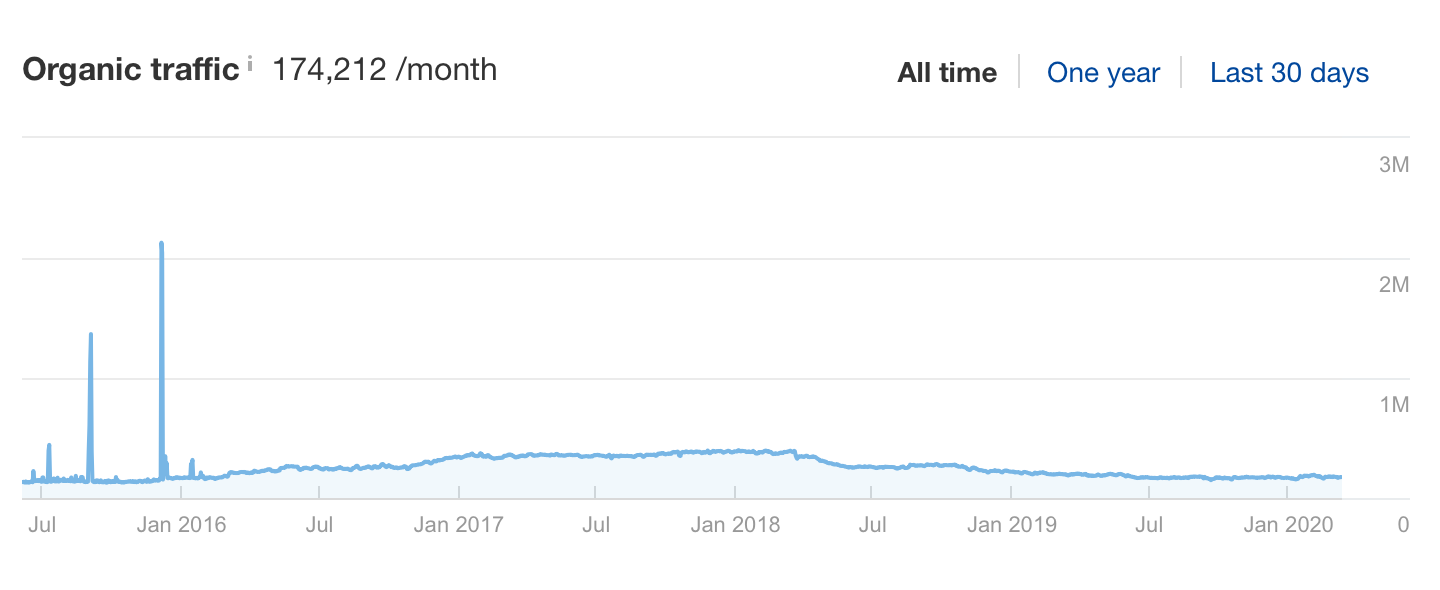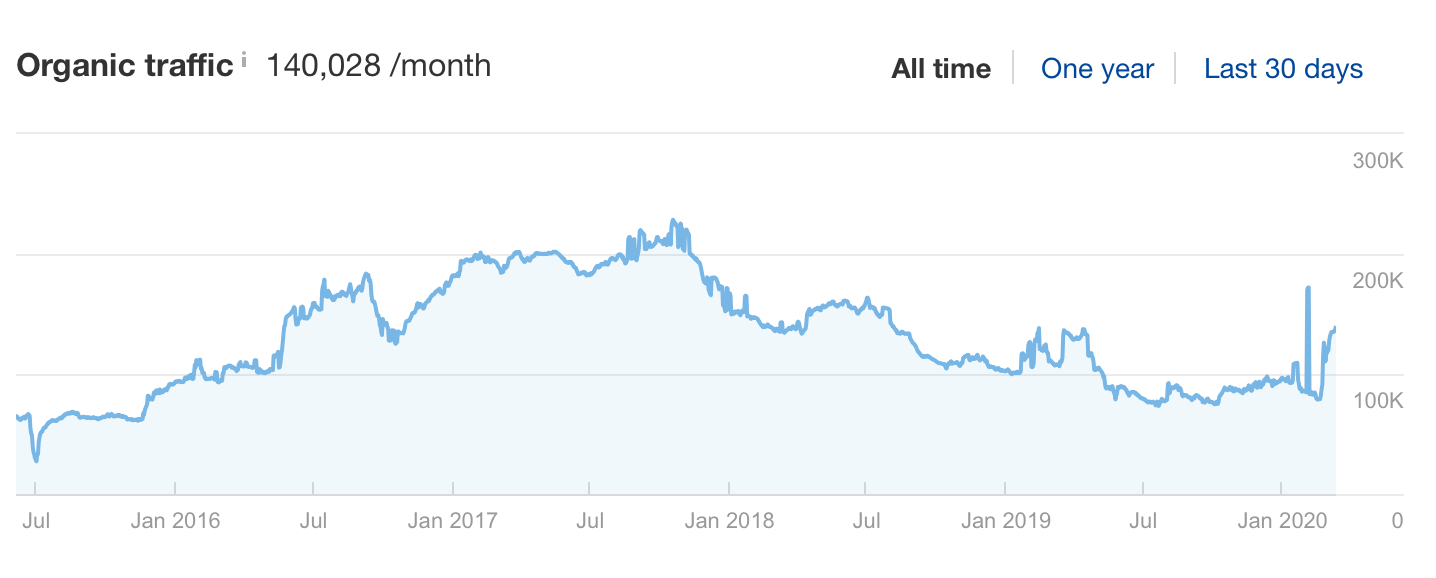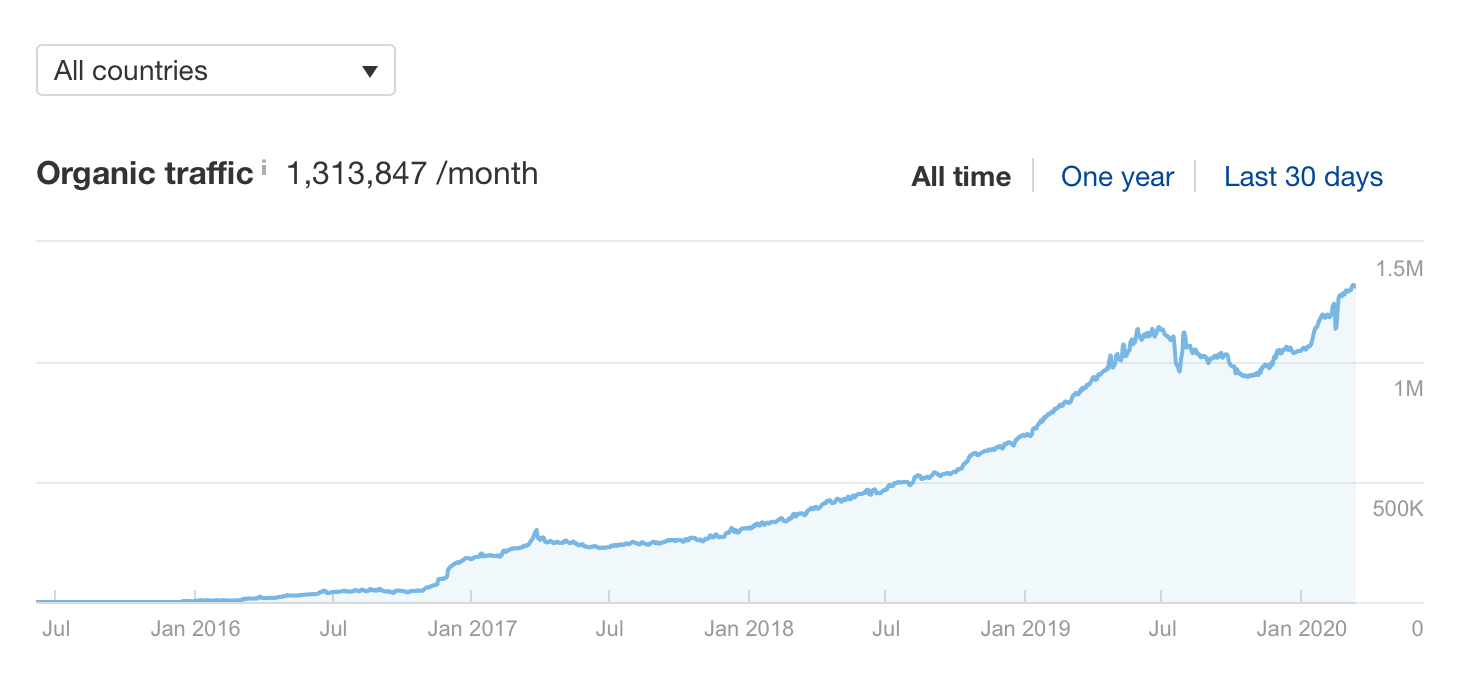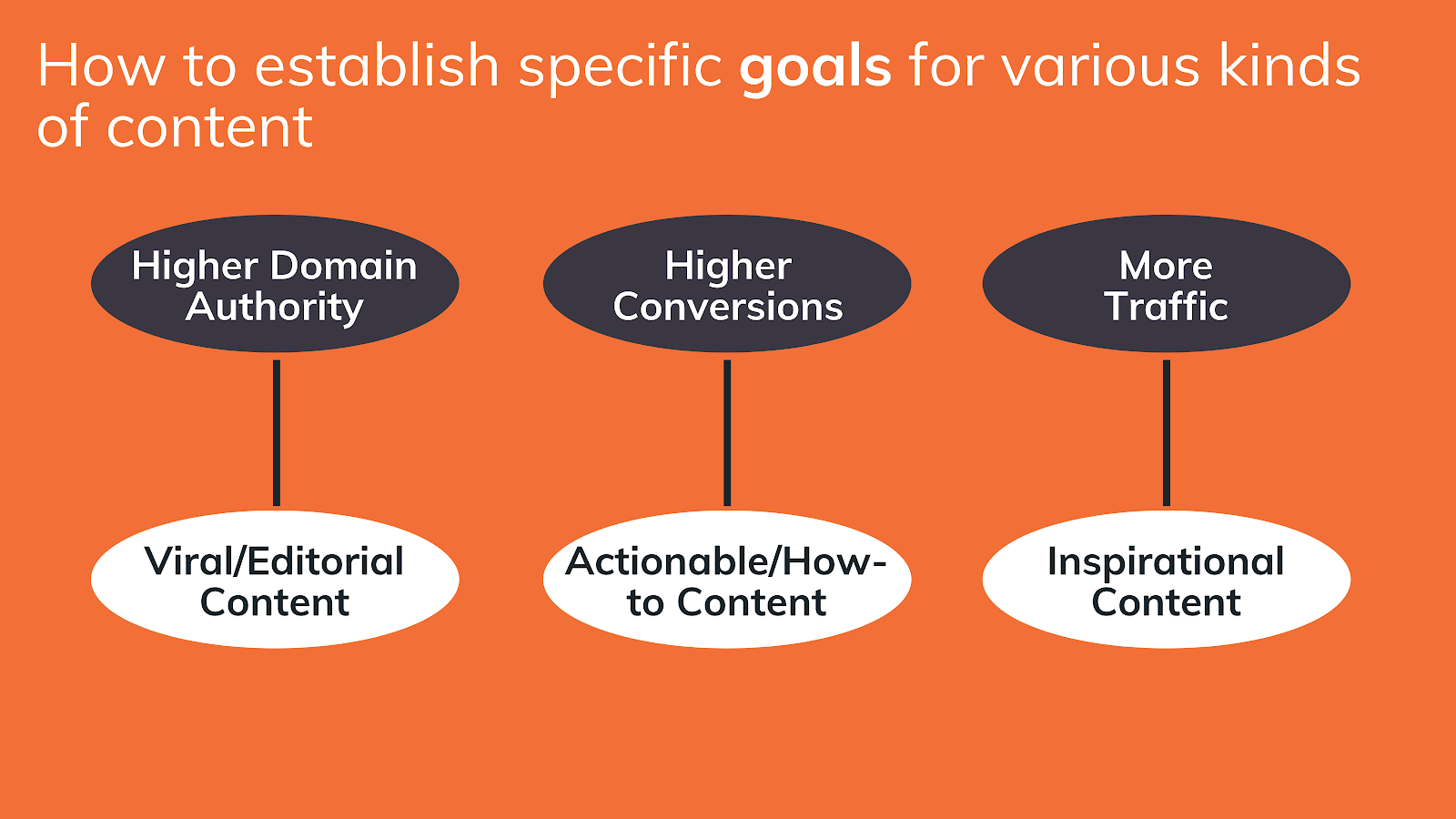Investors are a quirky bunch, and for the right reasons.
They’re extremely analytical, love the thrill that comes from taking risks and are fairly pragmatic (on most days) – characteristics that are polar opposites to one another.
Investors actively diversify their investments (investing in stocks, bonds and start-ups at the same time), so they stand to make consistent returns from their investments regardless of whether one investment (like start-up investing) is riskier than another (like government bonds).
And while some of the world’s most successful investors may track short-term market changes, they’re almost always focused on long-term returns.
These qualities have helped some investors (most notably Warren Buffett) reap massive gains through calculated, risk-taking, long-term investing.
To put it simply: Investing is as much an art as it is a science and as much a risk as it is luck, which is why investing and content marketing have a lot more in common than we think.
Content marketers often tend to be more haphazard in their efforts:
- They write an article without doing the research to see what their specific audience wants
- They publish frequently or infrequently but without plotting their long-term goals
- They don’t take the time to optimize their blog posts for search engines
- They only publish on their website’s blog and ignore other formats and channels
- They don’t even think about doing proper link building
So what can content marketers learn from investors? This post will help you diversify your content strategy, reorient you to be more long-term focused, and understand how to take calculated risks to maximize your ROI and smash your business goals.
Here’s what this guide will cover:
- Inside the Mind of an Investor
- The Old Approach to Content Marketing
- Approach Content Like an Investor
- A New Approach to Content Marketing
Inside the Mind of an Investor
Before I get into the good stuff, we first need to understand how investors operate and how we can use that to drive growth using content.
I’m no Warren Buffett, but I’ve been guilty of spending a considerable time learning “investing 101,” how investors operate and the investing principles they use – and I have a few observations.
While this is an oversimplification (investing is much more nuanced), I can safely summarize how investors operate in just four bullet points:
- They have a clear investment strategy which they regularly refine.
- They’re extremely bullish on diversification (don’t put all your eggs in one basket).
- They like taking “calculated” risks in which the odds are (on paper) in their favor.
- They’re extremely patient – or, better put: they’re long-term greedy.
Now that we know how investors approach investing, the next step is understanding how content marketing has worked (and still does) so we can get better at it.
Related Content:
* What Is Phygital Marketing?
* 22 Brands with the Best Content Marketing Campaigns
The Old Approach to Content Marketing
Here’s how content marketing has worked in the past (and still does to this day).
You do some basic keyword research and even get your CEO to allocate a small amount of your marketing budget to your content endeavors.
You finally start the arduous process of creating content. You read one blog post that stressed the need for “high-quality skyscraper content,” so you decide to start doing the same thing. Maybe you even hire a writer to manage the bulk of the writing for you. Or you outsource all your content marketing to a digital marketing agency instead.
After spending months churning out blog posts, case studies and white papers, all aimed at attracting your ideal customers, you’re right where you were when you first started. “Where did it all go wrong?” you mutter to yourself as you contemplate your content strategy and your life choices (trust me, I’ve been there!).
And your organic traffic? It’s exactly where it was six months ago:

Or maybe your organic traffic did see a spike for a few months, but it dropped again:

This is much better than the previous example, but there’s still a lack of consistency. No backlinks, inconsistent traffic, and customers that are few and far between – that’s how content marketing has worked in the past (and still does).
Let’s contrast this with Venngage’s consistent growth over the last few years:

My goal isn’t to call out other content marketers or brag about Venngage. It’s meant to be a thoughtful comparison to help you understand one simple thing:
What got you here may not get you there (further growth). You need a new approach to content marketing for strategic growth.
Now that you know how most businesses and marketers approach content marketing, you’re probably thinking, “I know the problem, but what’s the solution? I’m glad you asked.
Read on to see what I recommend.
Dive Deeper: Google Analytics for Content Marketing: How to Track and Improve Your ROI
Approach Content Like an Investor
1) Diversify; Not all Content Is Created Equal
Content marketers dream about the magic piece of content that will get them:
- More traffic
- Higher domain authority (DA)
- Increased conversions
But how often have you seen one piece of content achieve all those goals in one fell swoop? Yeah, me neither.
Investors diversify their portfolio to mitigate risks and maximize potential gains, so thinking like an investor is crucial if you want to succeed with your content.
So what can you take away from their investment strategy?
You need to diversify your content strategy in terms of the kind of content you will create and what goal it will accomplish. This way, you hit the right goals with the right content:
- For more traffic: Create inspirational content that’s keyword-driven and intended to rank. For example, Single Grain’s “42 Digital Marketing Trends You Can’t Ignore in 2023” ranks for ~3.2K marketing-related keywords (which also makes it their highest traffic-driving page).
- For higher DA: Create viral content that press sites would want to link to. HelpScout’s “75 Customer Service Stats and Facts You Can’t Afford to Ignore” is a viral piece of content that has been referenced by publications like GoDaddy, USA Today, Forbes and IBM.
- For increased conversions: Create actionable content that addresses customer pain points and puts your customers first. Venngage’s “What Is an Infographic?” post has a respectable ~5% conversion rate and is an example of actionable content aimed at driving conversions.

A page optimized for driving traffic is not going to get you press mentions. And viral content is not going to drive traffic. Don’t believe me? Here’s an example of a inspirational post that’s meant to drive traffic:

See something interesting? This post ranks for 2.7K keywords and drives ~8K sessions in organic traffic.
And here’s an example of viral content that’s meant to generate press links:

It’s not keyword-optimized or meant to drive traffic. It’s created for a single goal: to generate press links (Forbes, GoDaddy and Entrepreneur are some of the high DA sites that link to this article).
A diversified content strategy with singular goals for every piece of content is what’s going to help you grow your content and prevent your organic traffic from flatlining. Click To TweetDisclaimer: Nadya Khoja and the content team created this content framework in the early days, helping Venngage grow 150% YoY – all through content marketing. All credit goes to them!
Dive Deeper: Omnichannel Marketing: Using the Content Sprout Method to Overcome Info Overload
2) Be Long-Term Greedy
Investors know that markets are cyclical in nature – one day they’re up, the next day they’re down. But what they’re also known for is their ability to think in years rather than months, which is how investors make steady returns over decades.
And as a content marketer, you should be thinking in months, not days. Now, if you’re a seasoned content marketer or SEO, you already know this. And if you’re someone who already thinks long term, this doesn’t faze you. But for those venturing into the unknown world of content for the first time, here’s a pro tip:
Content marketing takes time!
And I’m not talking hours or days. It takes months and even years to see the cumulative benefits of consistent blogging and a well-defined content strategy.
Once you start regularly putting in the work, creating content consistently and ranking for some high-volume keywords, you’ll eventually reach a point where you’ll create a snowball effect. This is where your blog posts start driving traffic to other pages through the magic of internal linking and eventually you’re going to start being recognized not only by Google, but other companies/readers as a thought leader in your topic of expertise.
Here are some examples of how far being long-term greedy can get you:
- It took years for Scott’s Cheap Flights to grow from a small 300-person email newsletter to now boasting 2 million members.
- It took Eric Siu, CEO of Single Grain, years to build his podcast Growth Everywhere. With just 9 downloads per episode in the first year, he now has 100K+ downloads a month (as well as 550K downloads a month for his other podcast, with Neil Patel, called Marketing School).
- It took Drift ~6 years to create a successful brand (and even an entirely new category called “conversational marketing”).
Do you get the point now? Thinking long-term is crucial, and consistency, even when the results aren’t immediate, is the key to growth via content.
Dive Deeper: How to Produce High-Quality Content Consistently and Not Waste Your Money
3) Take Calculated Risks
Investors are notorious for taking calculated risks.
And there’s a clear distinction between taking any old risk and taking one that’s “calculated.” Calculated risks are decisions grounded in reality and backed by data and past trends.
So what does this mean for your content marketing efforts? Start taking calculated risks with your content. Use data to drive decision making when it comes to brainstorming content ideas, writing content or updating older content.
If you know something that’s bound to work based on historical trends and success in other industries, plus have the data and baselines to back it up, all that’s really left is execution.
Here’s how we at Venngage take calculated risks:
- For us, every idea initially is just that: an idea. It first goes through the “well, is this going to work?” filter.
- After we’ve come up with a bunch of ideas during our brainstorming, we determine the odds of success by gathering baselines from similar content we’ve created, looking at historical trends and identifying keywords to target (based on volume and difficulty).
- Once we’ve looked at the data, the next step is: “Is this idea worth pursuing?” If the idea is sound and the data is promising, we create a test plan and execute the idea.
- When we see initial results with the content, the decision we then need to make is “do we continue this or not?”
- If the initial test is successful, we scale it. If not, we drop it and move onto the next one.
How does calculated risk-taking translate to real-world success? And what does it look like? Here are some numbers as it pertains to Venngage:
- We’ve grown by 150% YoY since 2015.
- We’ve grown our blog traffic by 3X in under a year (in 2016).
- We drive 40,000 registers weekly compared to 400 per week back in 2015.
With this framework, ideas go from being just fun ideas to completely fleshed out blog posts, landing pages, email newsletters and well-scoped content experiments throughout the whole funnel.
Remember, whether it’s testing a new landing page, creating a new blog post or updating an existing piece of content, only take risks where the odds are in your favor based on data, trends and gut instinct.
Here’s the bottom line: Take risks with your content until you finally figure out what works for you. And then do more of what already works.
Dive Deeper:
* How To Write Data Driven Posts
* How to Create a High-Performance Content Marketing Strategy in 2023
* How to Create a Killer SaaS Content Marketing Strategy
* Why You Should Update Content – Or Risk Losing The Traffic You Have [Case Study]
A New Approach to Content Marketing
To win at content in 2023, think about your business goals and the overarching growth strategy. If your goal is to drive growth using content, you need a strategic approach to content marketing.
To summarize, here’s what I recommend you do:
- Diversify! Create content that ranks, content that gets press mentions and content that drives conversions – separately. No one piece of content will do it all.
- Take calculated risks. Your editorial calendar can no longer be a list of fun ideas to write about. You need to start taking calculated, data-based risks with your content.
- Be long-term greedy. You need to give your content strategy time (at least a few months) before it starts driving search traffic.
Make a timeline of what kind of content you will create, the goal of each piece of content, and the milestones you aim to hit with your content strategy. Visualizing your goals will make it that much easier to hit them.
Your content strategy can’t be ad hoc. It needs to be a well-defined strategy that still allows room for ideation and experimentation on top of it. Start approaching content marketing like an investor. Go out there and make small bets with your content. The end result will most likely surprise you.



